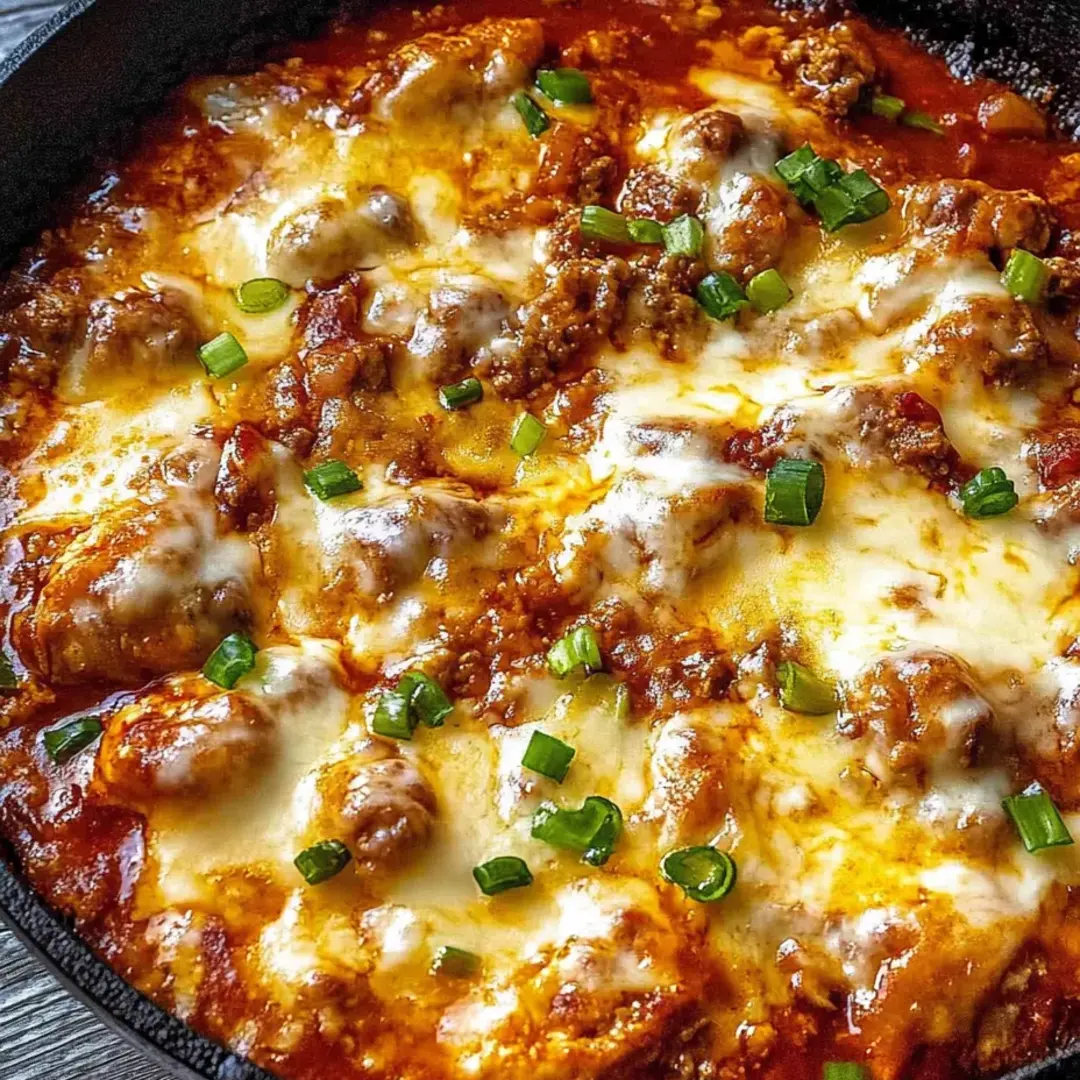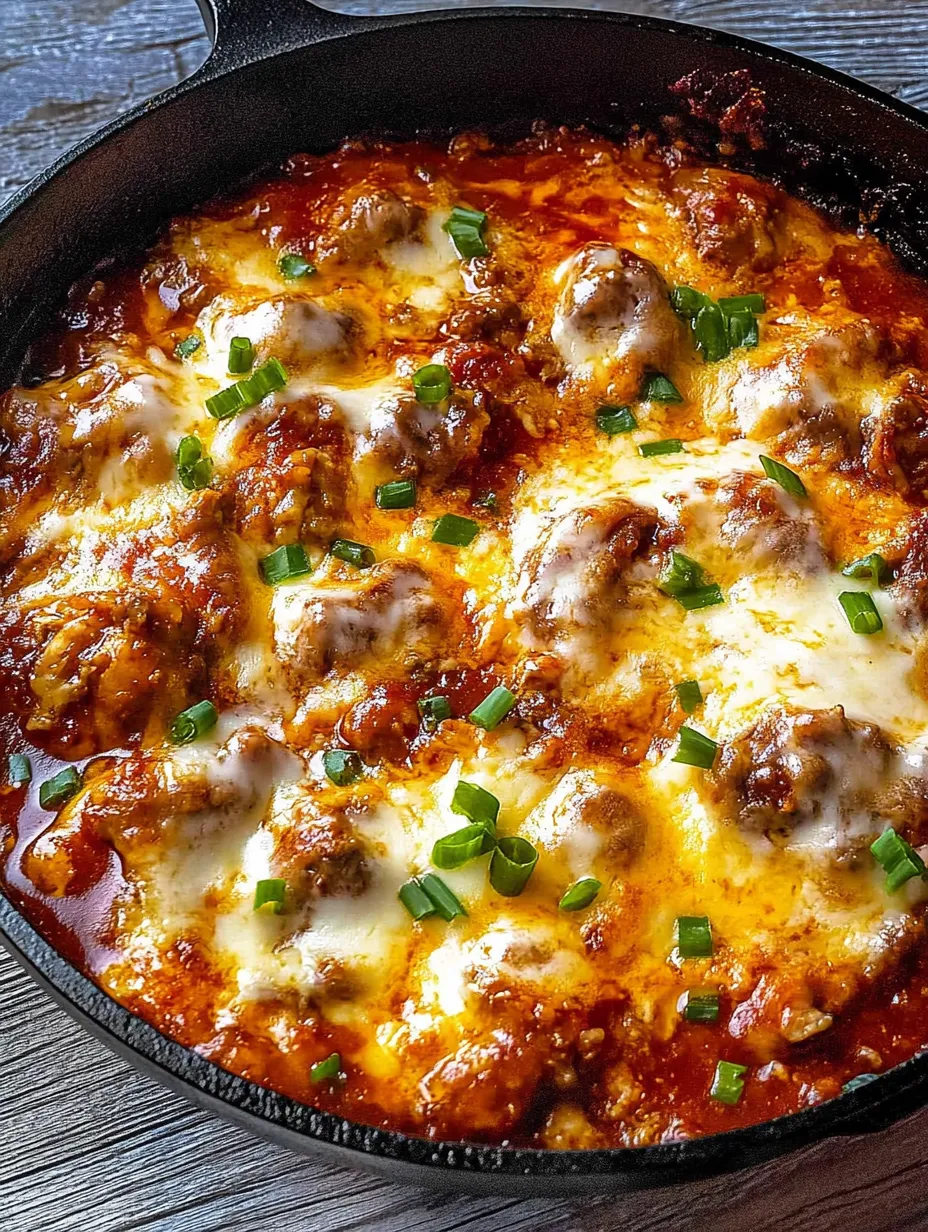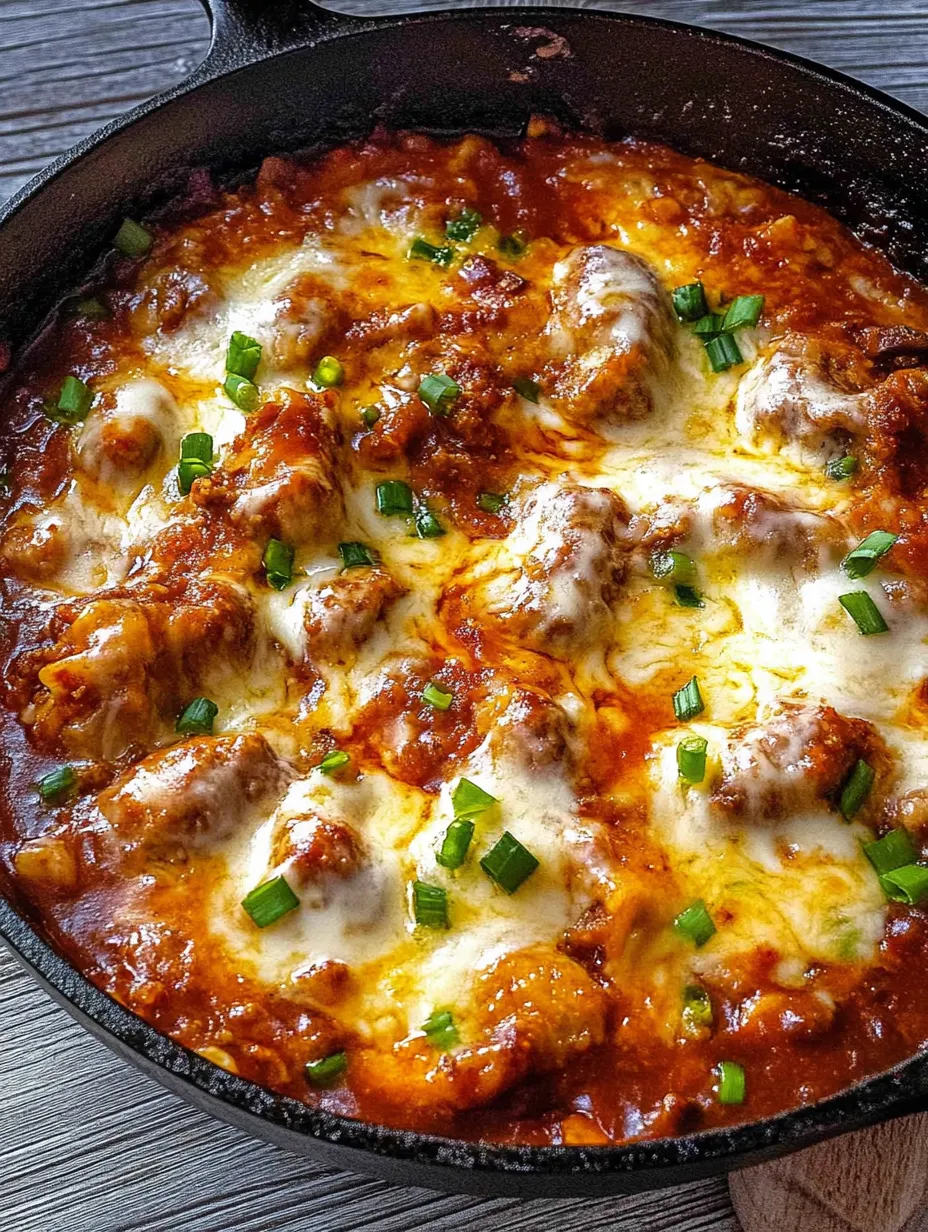 Pin it
Pin it
This fiery Korean Buldak delivers an explosion of bold flavors that will satisfy even the most dedicated heat-seekers. Tender chunks of chicken simmer in a vibrant sauce built around gochujang (Korean chili paste) and gochugaru (Korean chili flakes), creating that signature spicy-sweet-savory profile that's utterly addictive. Topped with a blanket of melted mozzarella cheese that provides cooling relief between bites of the spicy chicken, this dish offers the perfect balance of comfort and excitement. Whether served as a main course with rice or as a share plate with cold beverages, Buldak promises an unforgettable flavor experience that keeps you coming back for 'just one more bite.'
I first discovered Buldak at a tiny Korean restaurant tucked away in a strip mall. Despite the unassuming location, the place was packed with people eagerly digging into sizzling pans of this fiery chicken. After my first bite—eyes watering but unable to stop eating—I was hooked. It took several attempts to recreate that perfect balance of heat and flavor at home, but this recipe finally captures that authentic street food experience. My spice-adverse husband, who initially watched with skepticism, now requests this dish at least twice a month!
Key Ingredients
- Boneless chicken thighs: Their higher fat content keeps the meat juicy and tender while standing up to the bold sauce; dark meat also carries the spicy flavors better than breast meat
- Gochujang: This fermented Korean chili paste provides the foundation of flavor with its perfect balance of spicy, sweet, and umami notes; look for it in Asian markets or the international section of well-stocked groceries
- Gochugaru: Korean chili flakes differ from regular crushed red pepper by offering a sweeter, fruitier heat profile; they're essential for authentic flavor
- Soy sauce: Adds depth and saltiness that enhances the other flavors; use low-sodium if you're watching salt intake
- Sesame oil: Just a small amount contributes that distinctive nutty aroma that's characteristic of Korean cuisine
- Rice syrup: Creates the perfect sticky glaze and balances the heat with subtle sweetness; honey makes a good substitute
- Fresh garlic and ginger: Always use fresh rather than powdered for the brightest, most vibrant flavor foundation
- Mozzarella cheese: The mild, melty cheese provides cooling relief between bites of spicy chicken; its subtle flavor doesn't compete with the bold sauce
 Pin it
Pin it
Detailed Cooking Instructions
- Step 1:
- Begin by trimming 1½ pounds of boneless chicken thighs of any excess fat, then cut them into bite-sized pieces, roughly 1-inch cubes. Uniform pieces ensure even cooking and allow the marinade to penetrate consistently throughout the meat. Place the chicken pieces in a large mixing bowl.
- Step 2:
- In a separate bowl, create your Buldak sauce by combining 2 tablespoons gochugaru, 3 tablespoons gochujang, 2 tablespoons soy sauce, 1 tablespoon vegetable oil, 1 teaspoon sesame oil, 2 tablespoons rice syrup (or honey), 4 minced garlic cloves, and 1 tablespoon freshly grated ginger. Mix thoroughly until you have a thick, smooth paste with no lumps. The paste should be vibrant red and fragrant with the smell of garlic and ginger.
- Step 3:
- Pour the sauce over the chicken pieces and use your hands (wearing gloves is recommended to prevent staining) or tongs to massage the marinade into every piece, ensuring complete coverage. The thick consistency of the sauce should cling to the chicken rather than pool at the bottom of the bowl.
- Step 4:
- Cover the bowl with plastic wrap or transfer to an airtight container and refrigerate for at least 1 hour, though overnight marination will develop deeper flavors. During this time, the salt and acids in the marinade begin tenderizing the meat while the flavors penetrate beyond the surface.
- Step 5:
- When ready to cook, remove the marinated chicken from the refrigerator and let it sit at room temperature for about 15 minutes. This takes the chill off the meat and promotes more even cooking. Meanwhile, preheat your broiler if you plan to add cheese.
- Step 6:
- Heat a large cast iron skillet or heavy-bottomed pan over medium heat. A well-seasoned cast iron provides excellent heat retention and distribution, creating the perfect environment for developing flavor without burning the sauce.
- Step 7:
- Add the marinated chicken to the hot pan along with ¼ cup of chicken stock or water. The liquid helps prevent the thick sauce from scorching while creating a simmering environment for the chicken to cook through.
- Step 8:
- Cook the chicken, stirring occasionally, for about 10-12 minutes until the pieces are completely cooked through and the sauce has thickened to a glossy consistency that coats each piece. If the sauce reduces too quickly, add another tablespoon or two of stock or water to maintain moisture.
- Step 9:
- For the cheesy version (which I highly recommend), sprinkle 1½ cups of shredded mozzarella cheese evenly over the chicken in the pan. If your pan isn't broiler-safe, transfer the chicken to an oven-safe dish before adding the cheese.
- Step 10:
- Place the pan under the preheated broiler for 2-3 minutes, watching carefully to prevent burning. The cheese should melt completely and develop some golden-brown spots on top. This creates that irresistible cheese pull when serving.
- Step 11:
- Remove from the broiler and let it rest for 1-2 minutes before serving. Garnish with thinly sliced green onions, a sprinkle of sesame seeds, and additional gochugaru if you want to emphasize the dish's fiery nature.
- Step 12:
- Serve immediately while the cheese is still stretchy and the sauce is bubbling around the edges. Traditional accompaniments include white rice to temper the heat and simple side dishes like quick cucumber pickles or kimchi.
The Secret to Perfect Texture
The key to exceptional Buldak lies in achieving that perfect balance between tender chicken and a sauce that's reduced to the ideal consistency—not too watery, not too thick. I've found that using boneless thighs cut into uniform pieces about 1-inch square creates the ideal surface area for the sauce to cling to while ensuring the chicken remains juicy. The brief simmering stage with added stock or water is crucial; it allows the chicken to cook through gently while the sauce reduces to a glossy consistency that coats each piece perfectly. If you rush this process over high heat, the sauce can burn before the chicken is fully cooked. Patience during this stage rewards you with chicken that's tender throughout with a sauce that's intensely flavored and perfectly textured.
 Pin it
Pin it
Adjusting the Heat Level
One of the beauties of making Buldak at home is being able to customize the spice level to your preference. For those new to Korean cuisine or sensitive to heat, start with less gochugaru (perhaps 1 tablespoon instead of 2) and use mild gochujang. You'll still get the wonderful flavor profile without the intense heat. For spice enthusiasts looking to push boundaries, add 1-2 finely chopped fresh red chili peppers to the sauce or increase the gochugaru to 3 tablespoons. I've found that adding a teaspoon of Korean red pepper powder (the superfine variety) creates an even more intense heat experience that builds gradually as you eat. Remember that the cheese layer significantly tempers the spiciness, so if you're skipping the cheese, you might want to reduce the heat accordingly.
Serving Suggestions
While Buldak is absolutely delicious on its own, it really shines as part of a larger Korean-inspired meal. I typically serve it over steamed white rice, which absorbs the extra sauce and provides relief from the heat. For a lower-carb option, cauliflower rice works surprisingly well. Quick pickled vegetables offer a refreshing contrast—I particularly like thinly sliced cucumbers marinated in rice vinegar, a touch of sugar, and salt for about 30 minutes before serving. For entertaining, I've found that serving Buldak in the cooking pan with small bowls of rice on the side creates an impressive communal dish that guests can customize to their preference. Cold beer or a crisp white wine provides welcome relief between spicy bites.
I discovered by happy accident that adding a tablespoon of gochujang to softened butter creates an incredible compound butter that's perfect for slathering on bread and serving alongside the Buldak. The butter helps cool the palate while complementing the flavors in the dish—now it's a must-have accompaniment whenever I make this recipe!
This Buldak has become my signature dish for introducing friends to Korean cuisine beyond the familiar territory of bulgogi or bibimbap. There's something magical about watching someone take their first bite—the initial surprise at the heat followed by that moment when the flavor complexity kicks in and they can't help but go back for more. The combination of spicy, sweet, and savory creates such a compelling flavor profile that even those who normally shy away from spicy foods find themselves unable to resist. Whether you're already a Korean food enthusiast or just beginning to explore these flavors, this Buldak recipe offers an authentic taste of Korean street food that's bound to become a regular request in your household.
Frequently Asked Questions
- → How spicy is Buldak?
- Buldak (which literally means 'fire chicken') is quite spicy! The combination of gochugaru (Korean chili flakes) and gochujang (Korean chili paste) creates significant heat. You can adjust the spice level by reducing these ingredients.
- → What can I substitute for gochujang?
- While gochujang has a unique flavor, you can substitute it with a mixture of 2 parts red chili paste or sriracha, 1 part miso paste, and a bit of honey or sugar for sweetness. The flavor won't be exactly the same, but it will be similar.
- → Can I make this dish without cheese?
- Absolutely! The traditional version of Buldak didn't include cheese - it was added more recently to help balance the spiciness. The dish is delicious with or without the cheese topping.
- → What side dishes go well with Buldak?
- Serve Buldak with steamed rice to balance the spiciness, along with Korean side dishes (banchan) like kimchi, pickled vegetables, or a cooling cucumber salad. Many people also enjoy it with cold beer!
- → Can I use chicken breast instead of thighs?
- Yes, you can use chicken breasts instead of thighs. Just be careful not to overcook them as they can dry out more easily. Reduce the simmering time by a few minutes and check for doneness earlier.
